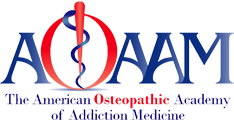Article: Pittsburgh Post-Gazette
James R. Latronica: Drug users have human rights, and they include harm reduction the state can supply
The news was grim. Overdose deaths in 2020 increased across the board, and rose a staggering 44% among Black individuals and 39% among American Indian and Alaskan Native individuals. Perhaps most surprisingly, overdose deaths were higher in areas where opioid treatment programs were available — Having “access” to health care does not mean being able to get it.
The root causes of this continued epidemic are manifold. As the medical community slowly comes to terms with the role that social determinants of health play in people’s lives, the role of marginalization and dispossession in driving this epidemic has become obvious and inescapable. In its latest report, for example, the Centers for Disease Control and Prevention notes that counties with higher income inequality suffered a disproportionate number of overdose deaths.
Increasing access to treatment for Substance Use Disorders is a critical part of this struggle, but people arrive to my clinic in various ways and not always in a predictable pattern. Not everyone is ready, able or willing to begin treatment at a given point in their life.
This is one reason we need increased harm reduction efforts. Medical and public health professionals engage in harm reduction efforts in many arenas. Seatbelts in cars are harm reduction. Medication for high cholesterol is harm reduction. Fatal motor vehicle accidents and heart attacks are devastating outcomes that relatively low-cost, high-impact primary interventions can prevent or mitigate.
Physicians call this type of intervention “preventive medicine.” As I’ll explain later it is an extension of human rights.
Two bills supporting effective harm reduction for people who use drugs are currently being considered in the Pennsylvania Legislature. The first, SB926, would permit the establishment of Syringe Service Programs in the commonwealth (They are already legal in 31 states and Washington, D.C.) Explicit legalization is important as these critical public health institutions operate in a legal grey area.
Syringe Service Programs have been shown to decrease overdose deaths, decrease the rate of blood-borne illnesses like hepatitis C and HIV, decrease the rate of discarded needles in the community and harm to first responders, and increases the rate at which people enter into formal treatment. They are a relatively inexpensive, overwhelmingly positive public health benefit.
The second, HB1393, which recently passed the full House unanimously, would permit the use of fentanyl test strips across the commonwealth. (They are now only legal within Philadelphia and Pittsburgh city limits). The strips allow people using substances to determine if fentanyl is present or not with a simple color-changing strip, similar to a pregnancy test.
This is critical as fentanyl is now present in nearly every substance available in the banned drug supply, and users of non-opioid substances are at enormous risk of overdose given the potency of fentanyl. Perhaps most importantly, with amended language, the bill would allow for the testing of a wide range of contaminants and poisons that are now pervasive in the banned drug supply. For example, a significant proportion of seized drugs contain xylazine, an anesthetic used by veterinarians. Naloxone cannot reverse its effects.
Available evidence strongly supports interventions like providing syringes and ways to test the drug supply, but there is a deeper, more fundamental reason to legalize these measures. People do not deserve to suffer and die for using a given substance, especially when saving their lives is so easy to do. That is why I consider harm reduction efforts as a matter of basic human rights.
Human rights constitute an agreement and a promise: the agreement that humans have an immutable dignity that must be protected, and a promise that we strive together to construct and maintain institutions that ensure it. This is true whatever needs they have, even if many people look down on their needs. When we stigmatize harm reduction for people who use drugs, we’re telling them that their lives are not valuable, that they are worth less than other people.
Harm reduction efforts for people who use drugs are a moral and clinical good and should be argued for on their merits, without prevarication. Lives depend on the passage of the current bills and sufficient funding for harm reduction across the commonwealth.
James R. Latronica, DO, is an addiction specialist physician and public policy chair of the Pennsylvania Society of Addiction Medicine based in Pittsburgh. He can be found on Twitter @JamesRLatronica.
First Published July 28, 2022, 12:00am
